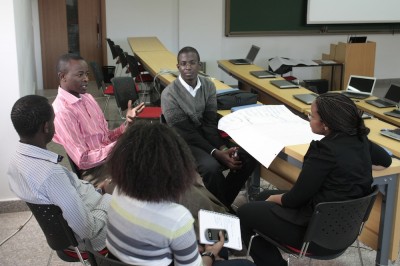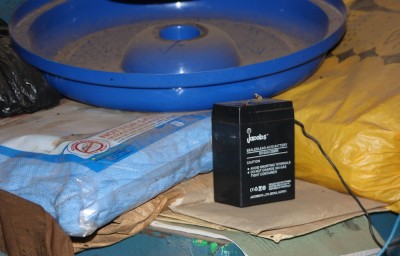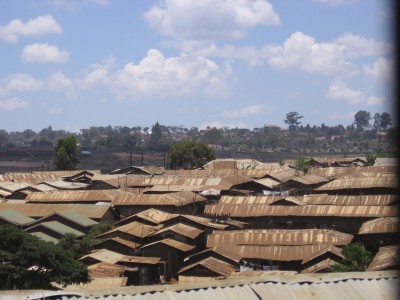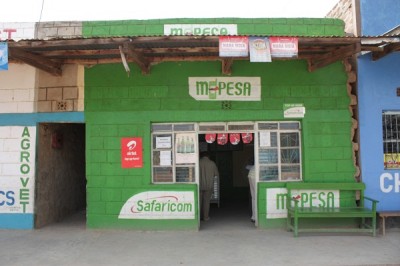Archive for the ‘BoP’ Category
Delivering Value Made Simple
“The rationale behind how a business creates, delivers and captures value.”
That’s the short version definition for the term ‘business model‘. For those with no background in economics or commerce (read techies) all this talk about ‘value’ can be too vague to be much good. It leaves too much to subjective interpretation. It needs to be less so. Less subjective interpretation on the innovators end and about the same as before on the consumer end. For purposes of this post, techies include those who make things like handbags, solar panels, furniture…as well as computer programmers.
Tech innovators typically need to ideate less from the comfort of their space (workshop/keyboard) and more from the environment their clients will be using their product or service. This means clients continue to judge the performance of the product using their existing schema and the innovator adopts their own interpretation of value to the users subjective interpretation.
So what does delivering value mean for a techpreneur in Africa? It boils down to job descriptions. What job is the client trying to get done and how does your new app/service/magic help them do it better, faster, cheaper and/or cooler? When clients choose to take the risk of investing money or time (or both) in trying your technology, they expect something to happen. Delivering on that expectation is your easiest definition of delivering value. It means innovators need to spend lots of time with the people they expect to serve with their technology in order to understand what this expectation would be.
But when is value actually delivered? Is it at point of sale? Is it at point of use? Is it at point of disposal? Is it at multiple areas? Social enterprises and civil society led projects generally tend to lose sight of this resulting in huge amounts of wasted resources and a muddied view of their sector in the public domain. For-profit organizations can be just as guilty of failing to understand their clients. Financial services businesses can be notorious for creating products that are poorly distributed or whose value is eroded at the point-of-use such as low density of ATMs resulting in long queues and high charges for clients wishing to close their accounts (point-of-disposal). Some products are essential enough and common enough to be almost impossible to differentiate at the product level. However, new value can be delivered through better distribution, better packaging, easier disposal or better branding that taps into the client’s aspirations.
So before you spend too much time building out some amazing new app, chair, bag or drone make the time to listen and watch your clients to understand what their lives are like and how your product can make a part of it better by helping them get a job done; or to put it in buzz words we all understand…
“Understand how your product or service empowers users across the value chain by synergistically delivering new value through innovative business models.”
or get more buzz words here 🙂
TweetFour Things to Consider When Designing Small Solar Systems for Africa
If you are preparing to launch a solar lighting product in sub-Sahara Africa, especially Kenya, here are four things to consider based on my observations in Eastern Kenya earlier this year. No citations here, no scientific data just my thoughts.
- Tradeoffs will happen. Be on the right end of the tradeoff when it does. Usually these tradeoffs are not just price versus features but new thingymajigy vs status quo. Despite the trouble with kerosene, most consumers know how to cope with it. Save the customer time or money and you will be on the better side of the tradeoff. Time in getting a job done or money that is spent as a consequence of the existing solution (medical bills for children studying by kerosene lamps, burns, continued purchase of kerosene etc). If the payoff from your solar solution appears to require a long wait, you may already be on the wrong end of the tradeoff. Find a different benefit to present.
- Aspirations exist. Customers purchasing their first solar lighting product are moving up from kerosene to something cheaper to run. However, once they light up their house they begin to plan for the next electricity consuming device. A bigger radio and a television rank fairly high on the list of these customers. If your product can scale up with them to a point on that journey, they won’t feel they will have to write it off when they are ready for something bigger. Panels that form an array, charge controllers that can be replaced with bigger ones, the option to add batteries…these are some of the ways you can plugin to the customer’s aspirations and grow with them. A point to note; solar home system users in off-grid locations consider a grid connection once it becomes available despite the obvious cost benefit of solar power. A grid connection is considered a step up.
- Price isn’t everything. People like to show off their latest acquisitions, especially when these acquisitions translate into improved perceptions of their social status by their own peers. If your product is known for being cheap, that erodes the ‘brag-abilty‘ of it. Nokia mobile phones were very popular in the slums of Kibera despite not being the cheapest.
- Be part of an ecosystem. While showing off a solar product to residents of rural towns in Kenya earlier this year, they repeatedly asked what they would do with it if it needed repair. Because it features an LED light with integrated power storage, they immediately began asking how it would work with regular solar bulbs or readily available alternatives. They complained the panel was too small (they hesitated to classify it as a solar solution) and it worked with nothing else they that is readily available at their local electronics stores. Any one of those issues was a deal breaker. Play nice with others in the ecosystem and that includes other LED lights, batteries and fundis (local skilled technicians).
It seems to me that any firm selling a 5w-10w panel + 12v 60AH (or more) battery + easily available bulb is on the right path. Now if the solution allows additional panels to be integrated, a charge controller added and bigger batteries plugged in, you have a winner.
Message from Africa: We Have Money. We Will Buy.
This is the first of a four-part series on Africa, The Present Frontier.
The usual picture of Africa rarely includes middle class consumers and designer brands. In fact, it rarely portrays the other reality, the true potential that lies on the continent and in its people. Sadly, this robs many western brands off the opportunity to grow their businesses by establishing a presence on the continent. There’s a fast emerging middle class in Africa that has money and aspirations. Are there enough businesses supplying hope and the stuff they dream about?
In April 2011, the African Development Bank released a report on Africa’s Middle Class that showed the floating middle class has grown to over 20% of the population. This segment between the poor and the established middle class, is the only part of the economic pyramid that has had significant growth over the last 20 years achieving 100% growth in the last 30 years. They maybe susceptible to shocks that easily push them back into poverty but unlike their counterparts living in abject poverty, they have money to spend. With a population of 1 billion people, approximately 700million of whom have mobile devices, I can easily suppose a significant number of the floating class are connected. In itself, that is only important to telcos. However, it points to a growing trend everywhere else. An increasingly larger number of people with money to spend on connectivity (for whatever reason) signals a growing appetite for technology and services that connects people. It also signals a narrowing of the digital divide. Among many other signals emmanating from Africa, these two bode well for tech enterprise in Africa. Africa is attractive.
A number of brands in both tech and non-tech sectors have seen the signals from the continent and jumped on the opportunity to achieve phenomenal growth. Here are 7.
- Syngenta recently announced it’s intention to grow its Africa business to $1billion. The firm will invest $500million and grow its workforce by 700 over the next 10 years.
- Diageo has invested $1.5billion in Africa over the last 5 years. Their Kenyan unit, maker of the iconic Tusker beer brand, EABL was one of the first listed firms to breach the $1billion market capitalization milestone.
- Unilever currently earns over $3.5billion a year from its African operations and is working to double that within the next 5 years. A big part of their focus appears to be a push deeper into rural areas where a good number of the floating and middle income population live.
- Visa acquired South African payments firm Fundamo for $110million as part of their strategy to grow their business on the continent. Despite the apparent threat their business faces from mobile payments, Visa sees great potential on the continent and executives contend that mobile payments won’t put them out of business. The acquisition of Fundamo signals their intent to never let mobile out of their sight.
- Samsung grew revenues in Africa to $1.2billion by 2010 and began a push to grow this to $10billion by 2015 with investments of $140million on the continent. Africa is the fastest growing market for mobile phone market in the world.
- Designer cosmetics maker L’Oreal expects Africa’s middle class to double over the next 10 years. It aims to grow its market 10%-20% year on year until it attains a 16% market share in Africa.
- Nokia was until recently the world’s largest mobile phone vendor. It’s number 1 position is now held by Samsung. However, five years ago, Nokia’s sales in Africa were estimated at $7billion (according to Wikinvest). It’s ability to churn out devices that struck a chord with African consumers was legendary and is still one of the continent’s most recognizable brands.
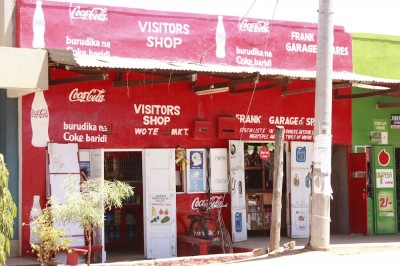
CocaCola branded shop in Kenya's Makueni District. CocaCola is the most successful beverages and FMCG business in sub-Sahara Africa.
Macroeconomic signals emanating from the continent have of course played a big role in attracting foreign investment. GDP growth in African countries touches double digits in some countries, growth rate unlikely to be witnessed in developed economies where economic growth has stagnated for some and shrunk in others (hello Greece!). Driven by agriculture, tourism, minerals and financial services, economies on the continent have outperformed those in the west even during the worst of the recent financial crisis. Sub-sahara Africa in particular has seemed insulated from the chaos in financial markets in the rest of the world. Africa is growing.
Whilst the usual story about Africa has attracted non-profits and social entrepreneurs to the continent, the story of consumer aspirations, economic growth, political stability and an increasingly educated and savvy population has attracted their for-profit counterparts. Some of the social enterprises that have setup shop here have had great success whilst others have come to Africa to die. A good indicator of whether a social enterprise will succeed on the continent is sometimes determined by how effectively it communicates hope to its market. When marketing and communications departments use the same tone for fundraising in the west to sell merchandise in Africa, one can expect dismal results because the tone in the fundraising message is one of hopelessness and desperation.
For-profit enterprises have not had to struggle with this dual-message strategy. Their message is usually ‘Buy my great stuff’ or ‘My stuff will make you great’. Even when they deliver very little hope, it goes a longer way than low prices. Some big brands have learned this the hard way. Expecting to acquire huge market share by adopting a low-margin high-volume business model that was successful in India, Airtel was handed a rude shock by the continent and has had to go back to the drawing board.
As some have suggested, hope can make a big difference to those living in economic hardship sometimes resulting in higher spending. Africa has great aspirations. Some brands have known this all along and have been handsomely rewarded by customers in Africa. Here are two brands that have always had great success with the BoP customer in Africa.
- Safaricom is East Africa’s largest mobile phone company with the world’s most notable mobile money platform, MPesa. Here’s an ad campaign they have been running recently in Kenyan media. Even with the most expensive on-net calls Safaricom remains by far the largest network by subscriber numbers and revenue.
- Coca Cola has been very successful in Africa. Present in 56 countries and territories on the continent and with over 160 bottling plants this soft drinks maker has a distribution channel that is the envy of many in the fast moving consumer goods industry. In places where there is no medication, education or even healthcare, you may still find a Coke. Their advertising seeks to inspire and the results speak for themselves. Here’s an ad currently running on African television as part of their 1 Billion Reasons to Believe in Africa campaign.
Fast growing economies, a fast growing middle class, political stability and a growing ICT sector are current features of Africa that make it a great place to be for those seeking to expand. It is also increasingly attractive for technology businesses that understand the African customer or are willing to take the time to do so. Some of the top performing brands in Africa today understand this and have been on the continent for a long time. While everyone else was talking about Africa being the next frontier they saw Africa as the present frontier. It’s still early enough for businesses to establish a presence with new products and services that have not existed on the continent. Like Wonga launching it’s first international location in South Africa.
Africa is here. The message from Africa to the rest of the world is simple.
Have money. Will buy. Who’s selling?
Align With The BoP Customer’s Aspirations. Or Die.
Kibera is Kenya’s largest slum: informal settlement if we go by the more established euphemism in use today. The corrugated iron sheet roofs do not stand alone on this vast landscape but are interspersed by TV antennas, so many they seem to stand guard like an army watching over the roofs as far as the eye can see. Should the residents of Kibera be spending their hard earned money on television sets? Shouldn’t they be fighting their way out of poverty? Saving for their future? Investing in better healthcare?
I hear these questions frequently enough from visitors from the West. Very valid questions which even middle class Africans ask of their lower-on-the-BoP ‘brethren’. I especially hear these questions asked by many involved in social enterprises with products that have obvious benefits to users rural, poor or both.
There exists a disconnect between these organizations’ aspirations (for instance: eliminate the use of kerosene) and their customer’s aspirations (for instance: be connected to electricity) introducing some interesting challenges for vendors. The focus by the vendor on building a product that eliminates harm and improves well being leads the business into a cul-de-sac where great products go to die. The same cul-de-sac where healthfood for the masses is to be found together with last year’s new year resolutions. The benefits of the product are undeniable and yet uptake remains poor. Sometimes the message behind the marketing communications destroys any chance a product has in the market. Especially when it asks customers to acknowledge, by purchasing the item, that they are financially unable to cope with the rising cost of living. An admission of defeat. The product does not provide a roadmap for advancement and by being an end in itself rather than a milestone on the journey to success catalyzes little hope for the future. No one wants to be hopeless, no matter how affordable it is.
Putting a great deal of thought into the design of a product comes easy for social entrepreneurs (at least it should) because they put impact before financial reward. However, the always very noble motivation of the service or product informs its positioning in the market. A market that also includes purely commercial players playing by a different rule book. This positioning sometimes aludes, through the products marketing message, to the hardship, poverty or level in society the user is most likely to be in. The poor (generally speaking) don’t wear the title with honor and pride. Reminding them that they are poor and disadvantaged at the point of purchase may only work as long as a competing product that tells them they can be superstars doesn’t exist. Here are two thoughts that are stirred in me whenever I travel to rural areas:
The customer social enterprises seek to convert may be in a disadvantaged situation or season in their life. If your messaging speaks to them as such, there will be a problem. Rural customers, especially those towards the bottom of the economic pyramid, don’t necessarily view themselves as poor. They make sophisticated financial planning decisions all the time trading-off performance against running cost and cost of acquisition against status quo. Speak to the job they are trying to get done and the aspirations they carry or your business will be on the wrong end of the trade-off.
Price isn’t everything in Africa. Ask Airtel, they have found out the hard way. Features you think matter to users may be of little consequence when held up against alternatives. Equity Bank grew rapidly as word of mouth spread about their easy-to-access credit and easy-to-open bank accounts resulting in acquisition of customers previously classified as ‘unbankable’; long queues in banking halls and at the ATMs notwithstanding. Spending a little time (at the very least) with customers and listening to their story may provide you with clues on what they need to get done and how pressing the need for a solution is. The intensity of your customer’s pain dictates the value trade-offs they are willing to make.
A customer only experiences pain because they are trying to get something done without the level of success they consider acceptable. Innovations that have succeeded in Africa have empowered customers not disempowered them. Our next posts will delve a little deeper into this.
Regulation & Innovation – The Challenge for Governments
During the Internet Governance Forum conference held in Nairobi last September, Kenya’s head for e-Government Dr. Catherine Getao made an observation that probably holds very true in many places worldwide. Private sector innovations can happen in the absence of government policy but in many instances government can’t implement innovation in service delivery until legislation and policy is in place. This was in response to a comment I had made on the disparity between the rate of innovation adoption by government when compared to the private sector and the citizens.
Mobile money in Kenya provides a fairly good example of this. M-Pesa is not directly regulated under a full banking license but operates under a special dispensation from industry regulators. At public roll-out, the MPesa service allowed urban Kenyans, for instance, to send money easily and more safely to their rural folk. Service providers then implemented utility payments via mobile money and integration of mobile money with conventional banking services. Within 3 years, firms like PesaPal and iPay had emerged providing a bridge between mobile money and e-commerce. Services in this space are continuing to evolve every year.
Although I can send money, pay utility bills, buy goods and check my bank balance through my mobile phone, I still can’t pay government fees, taxes or levies on it. I still have to go to a bank like I did 5 years ago. Hence Dr Gitau’s comment alluding to the delay caused by the (usually long) wait for development of legislation to guide government adoption of new technology for service delivery.
So whereas mobile money was launched and has continued to evolve in an environment where regulation and policy was yet to be fully developed, the government was unable to leverage this technological gains for its own good. Mobile money in Kenya is a good example of how innovation preceding regulation can be good for the country. Although governments can create an environment for phenomenal progress (like Kenya’s has done), their inability to keep up with the momentum triggered by the private sector for service delivery (due to bureaucracy) is an example of how innovation preceding regulation can slow progress in eGovernance.
This is where the challenge lies for those designing the next generation of eGov services as well as the agencies/departments seeking to improve service delivery through ICT. A highly collaborative multi-stakeholder approach is, in my opinion, necessary to not only accelerate the rate of innovation but the speed at which governance frameworks evolve to cater for the emerging ‘new normal’.
